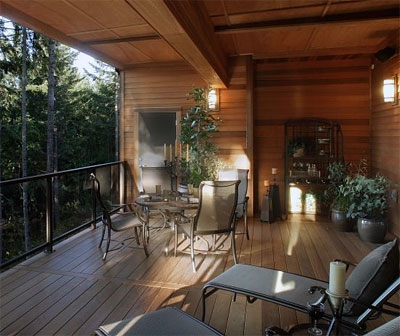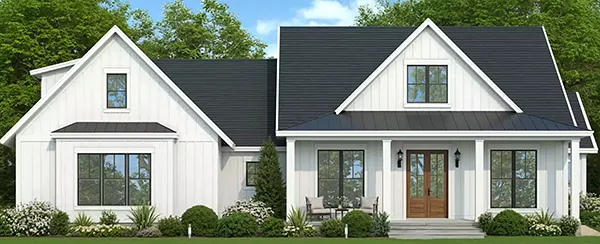Sustainable Decking Products
Red Cedar decking will complement any architectural style to create the perfect outdoor retreat.

Outdoor living spaces often become the favorite "rooms" of the house because they lend themselves to seasonal traditions, relaxation and fun festivities. From enjoying summer barbeques to a quiet swing in the hammock, decks invite us to slow down, hang out and enjoy the outdoors. You can do your part to ensure lasting beauty and preservation of your environment, by using green materials to build your new deck.
Here is some helpful information about the different green materials available to you, so you can build your dream deck:
Composite Decking
Composite decking products blend wood fiber and recycled plastics, adding in waxes, fiberglass, and preservatives to form wood-like boards. Popular manufacturers known for sustainable products and practices include Trex, Nexwood and Timbertech. Some products last up to 20 years with little maintenance, but remember all will weather and many will warp over time.
Treated Lumber
Naturally rot-resistant wood is wonderful stuff, but its depletion is making it more and more expensive. A popular and cost-effective substitute is decking made from less rot-resistant, cheaper softwoods like pine that are pressure-treated with various chemicals to inhibit decay.
Even if your deck is made of natural wood, the finishes used to keep it beautiful and prevent decay are usually not eco-friendly, which is why you should make sure your paints and stains are low-VOC and low-toxicity.
Natural Wood Decks
Natural wood decks have advantages that no other decking material possesses — it is non-toxic and extremely strong for its weight, it's a renewable resource and it's easy to reuse and recycle. And of course, for homeowners the biggest advantage is its natural beauty. To support sustainable forestry practices, look for wood certified by the Forest Stewardship Council (FSC).
Carefree Vinyl
Carefree vinyl decking is designed to look like real wood, much like vinyl siding does. Vinyl is available in a wide range of colors and shades. Since vinyl doesn't fade and is easy to clean, your deck can maintain its original look for years to come. The only drawback is its durability.
Exotic Wood
There are several "exotic" woods that are used on high-end deck projects, including ipe, mahogany, cambara, and Tiger Deck, the brand name for a Latin American relative of the cashew tree. They're all durable and have natural rot and pest-resistant characteristics giving your deck a "one-of-a-kind" look.
Red Cedar
Western Red Cedar has always been a favored wood because of its reputation for durability, versatility and beauty. It's a natural wood that complements any architectural style and blends into all landscapes.
Design Tip
Placing some eco-friendly furniture just outside the main deck entrance provides a smooth segue between spaces and invites guests to move freely between the indoors and outdoors. Choose cushioned fabrics to visually tie the interior and exterior together for a cohesive look. Built-in benches add both style and function to your deck. With the right planning, you'll be able to create an outdoor paradise that will become a welcome respite from the hectic pace of everyday life.






